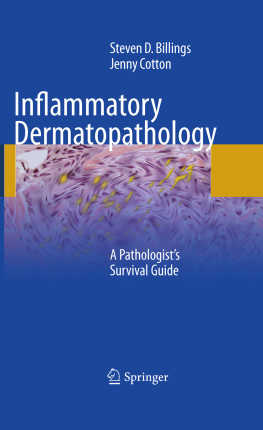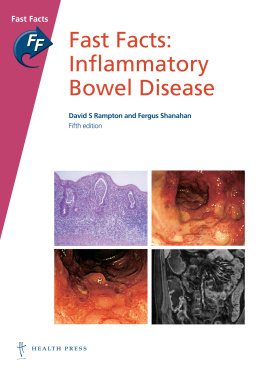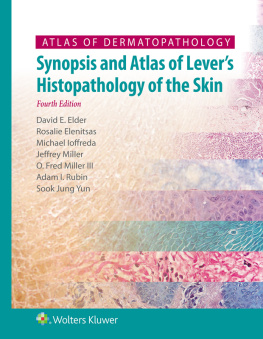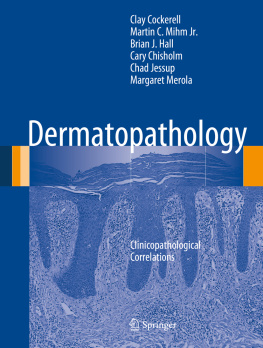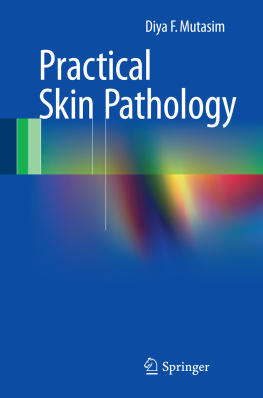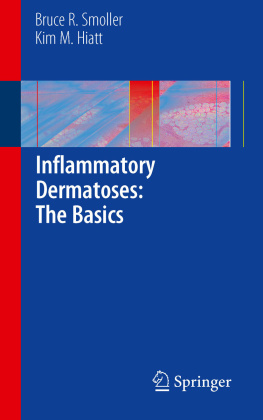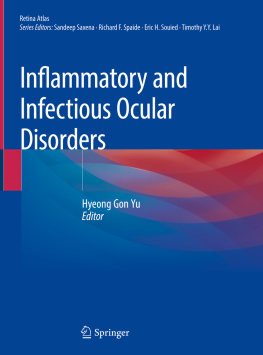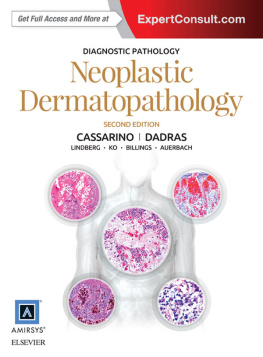Steven D. Billings and Jenny Cotton Inflammatory Dermatopathology A Pathologist's Survival Guide 10.1007/978-1-60327-838-6_1 Springer Science+Business Media, LLC 2010
1. Introduction
Dermatopathology is a hard subject and inflammatory dermatopathology is especially vexing. There is significant histologic overlap between the entities. The terminology can border on the impenetrable, and so, a specific diagnosis is often elusive. As a result we rely on diagnoses such as non-specific chronic dermatitis. Therein lies the problem. There is nothing that dermatologists or other clinicians hate more than the diagnosis of non-specific chronic dermatitis. It does not have to be this way. One can still make a descriptive diagnosis that is actually helpful to the clinician.
The key to interpreting biopsies of inflammatory dermatoses lies in understanding the concept of the basic reaction patterns. This book is generally organized according to these reaction patterns with some exceptions. Broadly speaking, most inflammatory dermatoses can be divided into two categories: epidermal and dermal patterns. In the epidermal patterns, there are three primary patterns: spongiotic, psoriasiform, and interface patterns. The spongiotic pattern is characterized by intraepidermal accumulation of edema fluid. The psoriasiform pattern is characterized by epidermal hyperplasia. The interface pattern is characterized by damage to the basal layer of the epidermis by an inflammatory infiltrate. The spongiotic and psoriasiform patterns frequently co-exist. Overlap with the interface pattern may also be seen.
The dermal patterns lack significant epidermal change. The dermal patterns can generally be divided into perivascular, nodular and diffuse, palisading granulomatous, and sclerosing patterns. As expected, the perivascular pattern demonstrates an inflammatory infiltrate predominantly around dermal blood vessels in a superficial, or superficial and deep distribution. In the nodular and diffuse pattern, the infiltrate is less vasculocentric. There may be significant overlap between perivascular and nodular and diffuse patterns. The palisading granulomatous pattern has an infiltrate that surrounds zones of altered collagen. Sclerosing dermatoses are characterized by fibrosis of the dermis, usually with relatively little inflammation.
As a general rule the epidermal patterns trump the dermal patterns. In other words, if there is significant epidermal change, the lesion belongs to one of the epidermal patterns, and not one of the dermal patterns. Within the epidermal patterns, the interface pattern trumps the other two epidermal patterns. One must be careful not to overinterpret basilar spongiosis as true interface change. In general, interface change shows at least focal evidence of keratinocyte destruction.
There are also special patterns that are unique unto themselves. Panniculitis does not belong to the aforementioned patterns, but is subdivided into septal and lobular patterns. Similarly bullous disease has is its own patterns, divided into subepidermal and intraepidermal patterns.
Knowledge of these patterns and the common entities in the patterns is crucial in creating a good pathology report. What makes up an ideal surgical pathology report of an inflammatory dermatosis? In our opinion, all reports from biopsies of inflammatory dermatoses require three elements: (1) diagnosis, (2) microscopic description, and (3) comment.
Obviously, a diagnosis is required for any report. When possible, it is important to provide a specific diagnosis. Unfortunately, a specific diagnosis is often not possible. In such cases, it is perfectly acceptable to provide a descriptive diagnosis. However, the descriptive diagnosis needs to be couched in the appropriate terms. In other words, the diagnosis needs to be framed using the reaction pattern that is present (e.g., spongiotic dermatitis) rather than overly general terms such as chronic dermatitis. What gives meaning to the descriptive diagnosis are the accompanying microscopic description and the comment section of the report.
As a specialty, pathologists are increasingly turning away from microscopic descriptions and it is becoming a lost art. However, it is still important to provide this in pathology reports for inflammatory skin diseases for a number of reasons. First and foremost, dermatologists as a general rule are relatively high-end consumers of pathology reports. Unlike some surgeons, they often read the entire report. They expect a microscopic description and are looking for key descriptive terms in the body of the report. Sometimes a microscopic description will provide additional insights into a case for the clinician and might even prompt consideration of alternate clinical possibilities. Another reason to provide a report is the nature of inflammatory processes in general. Inflammatory skin disease is dynamic. A particular entity may have a completely different appearance early in the course of the disease from what it looks like late in the disease process. Occasionally, multiple biopsies may be required, and the descriptive historical record can be helpful in deciphering the diagnosis. As a general rule, we incorporate the microscopic description as the first part of the comment section. Part of the reason for doing it this way is the layout of the report format we use. The choice in the construction of your report is up to you.
In the comment section of the report, especially in cases where a descriptive diagnosis is rendered, one should provide a differential diagnosis if possible and what is favored if possible. The comment section is frequently the most important section of the report. It is the pathologists chance to truly enter a dialog with the clinician. As mentioned above, we combine the microscopic description with the comment section. The first half of the comment section is the microscopic description while the second half is the discussion of the case.
When constructing a report, we recommend brevity. In general, the microscopic description/comment section can be provided in a handful of sentences. Verbose language is rarely required. Remember the axiom that the more you write, the less the consumer of the report reads. Another tip for generating effective reports is good communication with the clinician. Too often, pathologists forget to use one of tier most important tools: the telephone. Rarely does a day go by where we do not pick up a phone and call a contributor to seek additional information to clarify the clinical situation of a case. It must be remembered that clinicians rarely fill out the specimen requisitions. Often it is a nurse or assistant who fills out the form and certain key information can be missing. Furthermore, the physical space on the specimen requisitions may be too small to provide sufficiently detailed important information. A brief 5-minute phone call can often clear up these matters. It also helps build a working relationship with the clinician, a vital aspect of successful practice for any pathologist or dermatopathologist.

